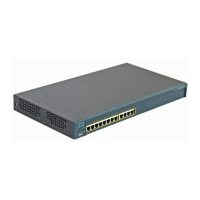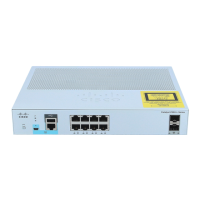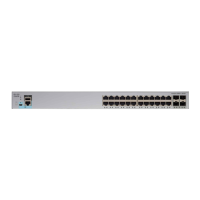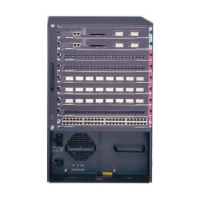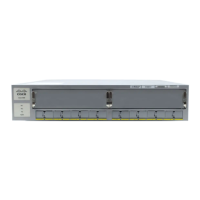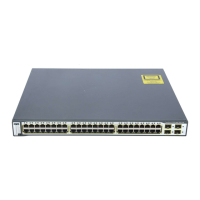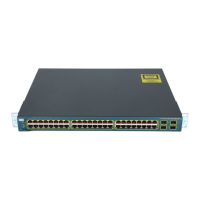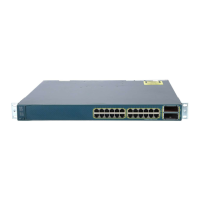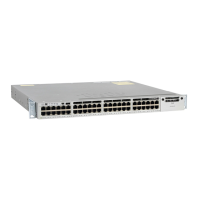Chapter 5 Clustering Switches
Understanding Switch Clusters
5-2
Catalyst 2900 Series XL and Catalyst 3500 Series XL Software Configuration Guide
78-6511-05
Understanding Switch Clusters
A switch cluster is a group of connected Catalyst desktop switches that are
managed as a single entity. The switches can be in the same location, or they can
be distributed across a contiguous Layer 2 network. All communication with
cluster switches is through one IP address.
In a switch cluster, 1 switch must be designated as the command switch and up to
15 switches can be member switches. The command switch is the single point of
access used to configure, manage, and monitor the member switches. It identifies
and controls all member switches in a cluster, regardless of where they are located
and how they are connected. You can designate one or more switches as standby
command switches to avoid losing contact with cluster members if the command
switch fails.
The following sections list the requirements for the following cluster members:
• Command switch
• Standby command switches
• Candidate and member switches
Note Refer to the release notes for the list of Catalyst switches enabled for switch
clustering, including which ones can be command switches and which ones
can only be member switches, and the required software versions.
Command Switch Characteristics
The command switch must meet the following requirements:
• It is running Cisco IOS Release 12.0(5)XP or later.
• It has an IP address.
• It has Cisco Discovery Protocol (CDP) version 2 enabled (the default).
• It is not a command or member switch of another cluster.
• It belongs to the same management VLAN as the cluster member switches.
• No access lists have been defined for the switch because access lists can
restrict access to a switch. Access lists are not usually used in configuring the
Catalyst 2900 XL and Catalyst 3500 XL switches, except for the access
class 199 that is created when a device is configured as the command switch.
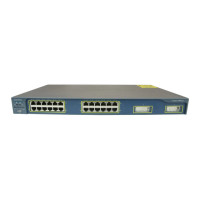
